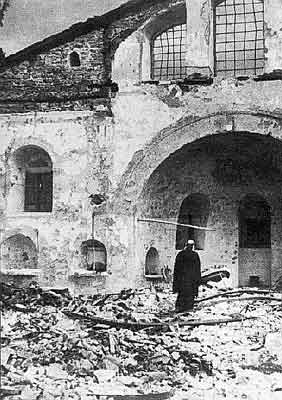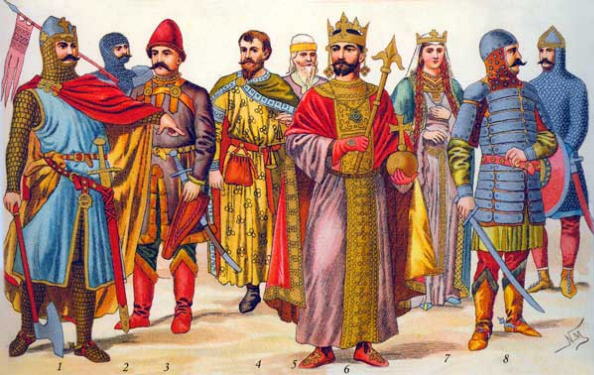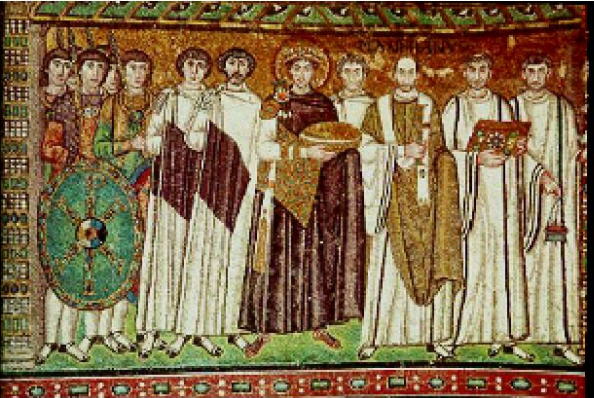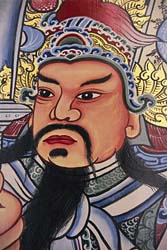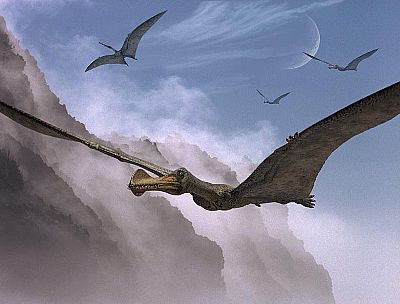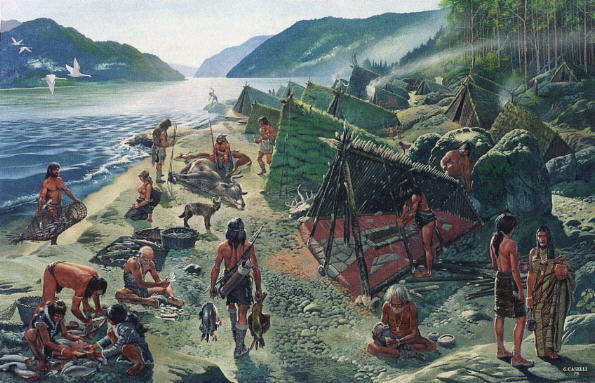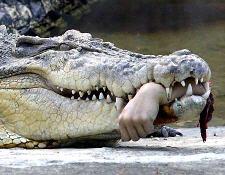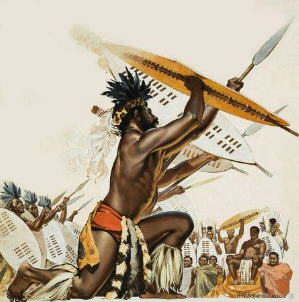BALKAN CAMPAIGN 1425-1428
Because of the movement of multiple armies and related events, I've had to
track this month by month.
The terms "Hungarian" and "Magyar" are used
interchangably, as are "Byzantine" and "Greek".
March 1425
With snow still on the ground, King Stefan and Lord Balaton led twenty
thousand troops east out of Budapest. These were mostly cavalry but with
infantry and crossbowmen as well. Accompanying them were another ten
thousand cavalry commanded by the veteran Lord Csaba, in his late 60s
but still tough as leather.
Lord Hellfire, managing the government in the king's absence, informs
Laertes that Stefan has taken the army on manuvers while considering
Justinian's offer. A warrior first and a liege second, Stefan thinks best in
the saddle or camped under the stars, Lord Hellfire explained.
The Byzantines too were on the move, positioning themselves to act if the
offer presented by Laertes was not accepted. Civilized and diplomatic
doesn't mean stupid.
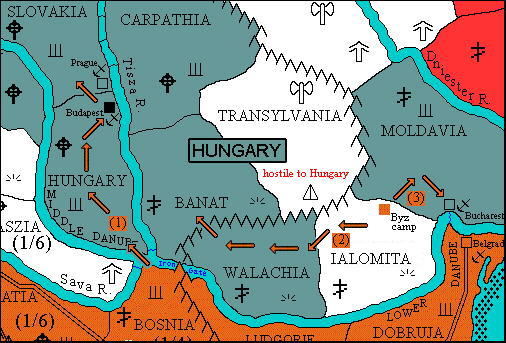
The Byzantine plan: (1) Gladius Maximus (18,000),
Prince Costas (5,000) & Mihajlovic of Serbia (1,500) would cross the Danube
from Bosnia, pacify Hungary, storm Budapest then pacify Slovakia. (2) Leo
(10,000) would move west
from camp in Ialomita to pacify Walachia then Banat. (3) Profirio (4,000)
and Simon's mercenaries (15,000) would move northeast from camp in Ialomita
to pacify Moldavia then storm Bucharest.
March 1425
Mercenary captain Simon and his company gather in Belgrade in the
Dobruja, having taken service with Byzantium. Shortly thereafter they
leave for the Byzantine camp in Ialomita.
May 1425
The combined thirty thousand Hungarians moved south through the Banat,
headed towards the Carpathian mountains that marked the border with
Wallachia.
One night King Stefan awoke to shouts and the sound of
running feet outside his tent and the alarm bar being sounded. Shortly
thereafter a retainer entered the tent, panting, "Sire, Lord
Csaba has been murdered in his tent!" Stefan and a party of guards
hurried to the scene, meeting Lord Balaton and more men on the way.
Sure enough, two dead guards were found
behind Csaba's tent where a floor-to-ceiling slit showed how the assassins
had made their entry.
Within Csaba's tent there was blood everywhere; the man
had been practically hacked apart. "The cowardly Greeks feared to meet
him in battle," said the King.
Turning to his second-in-command Lord Balaton, he added, "I will lead the
main army alone. You now command Csaba's force. We will avenge his
death a thousand-fold."
Balaton bowed, and left to meet with Csaba's officers.
August 1425
The twenty thousand men under King Stefan and ten thousand led by
Lord Balaton move eastward through Walachia, in September going
into winter camp by the Ialomitan border.
End December 1425
Summoned to
the royal palace in Budapest, Byzantine representative Laertes is told by
Lord Hellfire that King Stefan has not made a decision.
Winter 1426
Byzantine armies receive word from Justinian to begin the
conquest of the Hungarian kingdom with the spring campaign season.
March 1426
The combined Byzantine armies of Gladius Maximus, Prince Costas, and
Mihajlovic of Serbia begin crossing the Middle Danube into
southern Hungary, the Magyar homeland.
Hungarian forces break camp and move east into Ialomita, their goal the
destruction of the Byzantine army in that region.
The mercenaries of Simon and a light infantry force led by Profirio begin
crossing into Moldavia. The remainder of the
army, commanded by Leo, moves west across Ialomita -
straight towards the Hungarians coming east.
Mid-March 1426
Stefan and Leo both have receive reports of their
enemy approaching. Leo, knowing his infantry can't outmanuver the masses
of Magyar cavalry, forms a defensive line. The steppe favors cavalry and
reduces the effectiveness of infantry; the best his army can do is sell
their lives expensively.
Six thousand Hungarians march towards the center of the Byzantine line
whilst twenty-four thousand cavalry form up behind them in two masses, to
pass to either side of their comrades on foot and strike the Greek flanks in
a Cannae-style double envelopment.
At a signal from their King, the Hungarian cavalry starts moving, slowly, then
faster into a full charge, sabres ready. As
they approach the Greeks, the closest ranks of Magyar foot, still out of range
of Byzantine bows, rasie their crossbows and fire a volley of 2,000 bolts. As
they hit home, hundreds of Byzantines, mostly unarmored light infantry, go down
as if wheat before a scythe. A small proportion of the total Greek strength, but
it shocks them and disorders their line.
The Hungarian cavalry crashes into the Byzantine line like a sledgehammer,
smashing through by sheer weight. Magyar
infantry rush forward to get into the battle as well.
Most of the Greeks were light infantry, without armor and used to
skirmishing, Against horsemen in chainmail, surrounded and pressed back upon
their comrades with nowhere to manuver, they are cut down in droves.
Over 9,000 Byzantines are killed or died of their wounds as
they lay amidst their dead comrades. Not quite a thousand are taken prisoner,
almost all of them wounded, including young Leo.
The Magyars lose less than seven hundred dead and less than 1,500 wounded,
a testament to what cavalry can do to infantry on the open steppe.
April 1426
The mercenaries of Simon and the light infantry force led by Profirio complete
their entry into Moldavia.
May 1426
The main Byzantine force of Gladius Maximus, Prince Costas, and
Mihajlovic of Serbia complete crossing the Middle Danube. To Gladius'
amazement the crossing is uncontested.
May-July 1426
Simon and Profirio pacify Moldavia, the local levies
retreating ahead of them to join the garrison of Bucharest, held by 16 year
old Nicolas, Count of Moldavia.
Vlad II Dracul of Transylvania, taking advantage of the situation, again raids
across the mountains into western Moldavia,
returning to Castle Dracul with gold and food.
The Hungarians easily pacify Ialomita, since the local lords
haven't had time to raise, equip and train new levies. It was Stefan's intention
at this point to continue on to Moldavia, there to React to further Byzantine
invasions.
He had just begun heading east when news arrives of the Greek
conquest of Moldavia, and of the invasion of Hungary itself. At
once Stefan orders his armies to return west to aid the homeland;
a cavalry force is left to patrol reconquered Ialomita. Word is sent to
Nicolas in Bucharest to hold at all costs.
June-August 1426
The forces of Gladius Maximus, Prince Costas and Mihajlovic overrun the
Hungarian homeland, having located ten forts but no mobile forces
supporting them. Having nearly forty batteries of two culverin each
with his army, Gladius subjects each fort in turn to several days' bombardment to
breach walls and demoralize the defenders, followed by a swift storming. All the
garrisons fight to the last man. Byzantine losses are less than 200 dead
and 400 wounded, plus two of the
light bombards which burst during firing (always a possibility, and why gunners
were paid more than infantry).
September 1426
Hungarian armies led by King Stefan and Lord Balaton cross into Walachia and
set up winter camp near the western mountains, resolving to liberate their homeland
during the 1427 campaigning season.
The Byzantine armies in both Hungary and Moldavia go into winter camp as well,
displacing locals from their homes for officers' quarters.
March-May 1427
Breaking camp, the Magyar army moves west through the Carpathian mountains,
into the Banat steppe.
Detatching a force to garrison Hungary,
Gladius Maximus orders his men deploy to
actively seige Budapest. The culverin begin firing, and the impacts
of their shot starts bringing down parts of walls
and towers in small avalanches of stone bits and mortar.
A few arrows come from the city walls but it is soon apparent that
the city is almost undefended. Lord Hellfire, under a flag of truce, rides out to
parlay, offering to surrender the city intact
if he and his family may leave with their
possessions. Gladius considers the man with loathing, but not wishing to throw
away such an opportunity, agrees.
Returning, Hellfire orders the gates opened; as planned, Byzantine cavalry led by
Prince Costas rush
through, securing them before the mayor or head of the city guard can
countermand the betrayal.
Later, the Byzantine representative Laertes and the army leaders sample the
contents of the royal wine cellar.
Profirio posted garrisons in Moldavia while the mercenaries of Simon put Bucharest
under seige, ten batteries of culverin and four of
basilisks bombarding the city. The smaller number of artillery do less
wall damage, but some of the heavier bombards'
"long" shots pass over the battlements
and crash through buildings, spreading fear among the civilians.
Profirio calls upon the city to surrender, but young Nicolas refuses, taking his
feudal vows seriously. The Greeks and mercs
launch a general assault against Nicolas' several thousand
mixed infantry and dismounted
cavalry holding the walls. The attackers are savaged as they approach, but
once they reach the ramparts, their superior numbers, training
and equipment let them clear the walls, then pour
into the city itself, the defenders
dying almost to a man. Nicolas was reported wounded but apparently
escaped aboard one of the transports and cogs that fled upriver.
Simon's mercenaries suffer less than 400 dead and 800 wounded, with a pair
of culverin burst from repeated use, while Profirio's light infantry take
several hundred casualties too.
June-August 1427
Stefan, Balaton and their armies reach the Tisza River between the Banat and
Hungary itself. The area is filled with those civilians who had fled Budapest,
scavanging food, including the Queen and royal children.
Stefan, grieving for his homeland and capital (curse Hellfire! ) orders the army
to cross the Tisza into Hungary.
When news of King Stefan's advance finally reaches Gladius Maximus,
Prince Costas and Mihajlovic in
Budapest, they grimly consider options: (1) deploying their mostly infantry
and artillery force to fight the more manuverable Hungarian
cavalry in open farmland would almost certainly lead to the same fate as
Leo's army in Ialomita. (2) enduring a seige in Budapest, with Hungarian ships
between them and supplies coming from Belgrade, could get them starved
out. (3) moving north to pacify Slovakia as originally planned appeared to be
their best chance.
Leaving a garrison in Budapest, the Byzantines head into Slovakia.
September 1427
Both his and Lord Balaton's armies now back in Hungary, Stefan orders the
homeland liberated. The scattered garrison of Byzantine infantry tries to fall back
but horsemen can move much faster than men on foot, and the homeland
population keeps their King well informed. The garrison is killed
to a man at a cost of less than fifty Hungarians dead.
Stefan orders his troops into winter encampment within sight of occupied
Budapest.
Finding no garrison at all in Slovakia, Gladius orders his men into winter camp.
March - May 1428
Logically, Stefan knows his army is not equipped or trained for city fighting,
but emotionally he cannot leave Budapest in the hands of his enemies.
Lacking seige engineers, he
orders his foot soldiers and dismounted cavalrymen to build scaling ladders.
Assaulting one's own capital, he thought, I wonder if any King
has done that before?
The Magyars advance, knowing from sources within the city it is held by
about 800 Byzantine infantry. Halting outside bowshot, the lead ranks
sent a sheet of crossbow bolts at the jeering (and obscenely gesturing)
Greeks atop the walls, killing
or wounding over a hundred. With a feral cry the Magyars launch a general
assault upon the disordered garrison, dozens of scaling ladders rising from
where they'd been concealed within the masses of warriors,
men scrambling up them in the face of arrows, reaching the parapets.
The Byzantines have superior training and equipment, and take a bloody toll
of the Hungarians, especially the dismounted cavalrymen who fight poorly on
foot. The Hungarians however have overwhelming numbers and sweep the walls
of defenders, hunting down and killing the last men of the garrison as they
break and flee.
Stefan enters his capital in triumph, pleasantly surprised to see it hadn't been
looted or set afire by the Greeks. The assault cost him over a thousand
dead and two thousand wounded, but the jubulation of the liberated populace
certainly justified the decision.
Stefan's men find Hellfire's mansion empty, everything of value gone along
with the betrayer and his family. They also find the Byzantine ambassador
Laertes passed out drunk in
his own chambers, surrounded by empty bottles of royal vintage.
Gladius orders defenses built along the Slovakian border with Hungary. If
the Magyars pursue him, he plans to extract a heavy price in lives.
June - September 1428
King Stefan takes the field near the Slovakian border, but hesitates to
attack, his scouts reporting on the Byzantine fieldworks. His army has
covered hundreds of miles and fought multiple battles over the past few
years, and would benefit from rest and reinforcements. His Queen, of
Slovakian heritage, is understandably angry.
Gladius, Costas and Mihajlovic prepare for an attack that doesn't happen,
keeping their men busy with construction and drills, meanwhile waiting
for new orders from Justinian.
|
![]()
![]()
![]()
![]()

